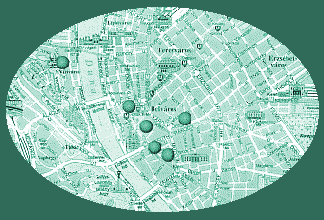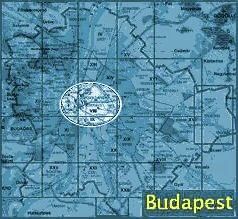

| Budapest History |
| Budapest Attractions Near Abc Apartments |
| Inner City Parish Church |
| Hungarian National Museum |
| Synagogue |
| St. Stephen's Basilica |
| Hungarian State Opera House |
| Parliament |
| Budapest Attractions - Castle Hill |
| Castle District |
| Fishermen's Bastion |
| Matthias Church |
| Mary Magdalene Tower |
| Cave System |
| Royal Palace |
| Budapest Events |
| About ABC Apartments |
|
If You need a pleasant accommodations during your visit in Budapest, but on moderate budget, feel free to contact Abc Apartments! |

![]()
The Budapest History
The history of Budapest starts on the Buda side when Celts settled on Gellért Hill well before the birth of Christ. Romans expand the empire's frontiers in the 1st century A.D. and occupied this territory. Aquincum, the Roman settlement, became the main city of Pannonia province. The ruins of Roman roads, amphitheatres, bastions and fortified strongholds still exists in Óbuda district.
In the 9th-10th century Magyars settled in the territory, including the today's Pest City Centre, which once was the large island. After the Tatar invasion in the 13th century, King Béla IV ordered the construction of stone walls around the towns and set his royal palace on the hills of Buda. In the Middle Ages there were two separate towns on two sides of the river: the famous Buda and Pest - the city of merchants.
In 1541 the teritory was captured by the Turks. The Turkish occupation lasted nearly 150 years and unfortunately left much destruction and just a few attractions from that time, such as Turkish thermal baths. Some of the baths built in Budapest during the Turkish occupation are still used today, like the Király Baths, Rác Baths, and Rudas Baths.
While the town's development was abruptly halted under Turks occupation, after its liberation, in the early eighteenth century, it received independent city rights and slow recovery of the city begun. The 19th century brought major developments of the city, furthered by the rebirth of commerce. Austro-Hungarian Monarchy was formed in 1867. which significantly contributed to the developement of the Budapest and the whole country.
The modern Budapest was born in 1873 when Buda, Óbuda (Ancient Buda) and Pest were officially joined, thus creating the new metropolis of Budapest. The city was rapidly growing and by the turn of the century became the country's administrative, political, economic, trade and cultural center. It was also a genuine rival to Vienna and become renown as the "Queen of the Danube" and the "Paris of Central Europe".
But Buda and Pest, even today, still create an interesting contrast. Hilly Buda is situated in the west, with its narrow cobbled streets and mixture of medieval and neo-classical buildings, while the flat Pest lies to the east, with its wide boulevards and Art Deco styles.
Budapest, capital of Hungary, with its fascinating history, renown for its incredible architecture and rich cultural heritage as well as wonderful atmosphere, provides a unique experience for visitors to this great city. Budapest is also a cultural Mecca, often called "Festival City" regarding it's long tradition of numerous notable festivals not to be missed.
Budapest Abc Apartments are ideally situated in Budapest Váci utca (pedestrian area) or very near it, only a few minutes to walk from most of the famous visitor attractions, festival halls, shops, restaurants and bars, yet in spite of being so close to all amenities experience none of the noise of the city at night.
Design and Online Marketing by Bpflat Inc., 2002
This page has been visited times.
